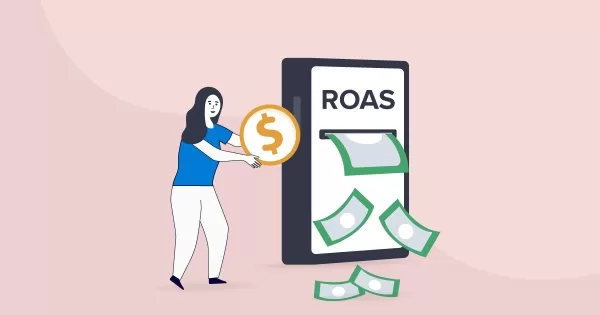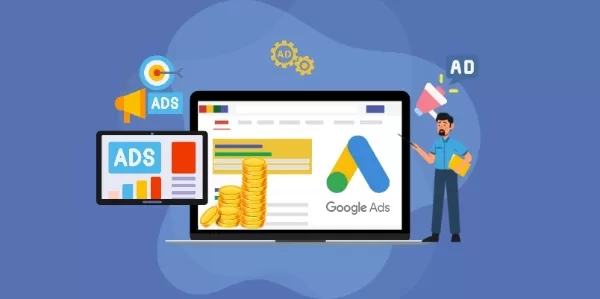Insights
What Is a Good ROAS? A Practical Guide for Marketers
On Digitals
02/09/2025
18
If you’re running ads online, you’ve probably wondered “what is a good ROAS?” at some point. ROAS, or Return on Ad Spend, is one of those metrics that can make or break your marketing budget. When your ROAS is strong, it means your campaigns are bringing in more money than you’re spending on them. When it’s weak, well, you’re basically throwing money down the drain. Understanding what is a good ROAS is crucial if you want to set realistic goals and make smarter decisions with your marketing dollars.
What Is ROAS and How Do You Calculate It?
What does ROAS Means?
Return on Ad Spend (ROAS) is basically a simple way to figure out how much money you’re making for every dollar you spend on ads. Think of it like this: if you put a dollar into a vending machine, how much candy do you get back? ROAS tells you if your ad campaigns are giving you enough “candy” or if they’re just eating your quarters. It’s a quick way to see whether your advertising money is actually working for you.
How to Calculate ROAS
The math here is pretty straightforward:
ROAS = Revenue Attributable to Ads ÷ Cost of Ads
You can show this as a ratio (like 4:1) or as a percentage (400%). Let’s say your campaign brought in $1,000 in sales and you spent $250 on ads. Your ROAS would be 4:1, or 400%. Pretty simple, right? Sources like Adjust and Shopify use this same calculation method.
Why ROAS Matters
The metric gets right to the core of the problem when running ads. Are your ads making you money or not? While other metrics like ROI look at all your business costs, ROAS just focuses on your ad spending. This makes it super useful for comparing how different campaigns and platforms are performing.

ROAS is a valuable metric to track to understand how your ads are performing
What Is a Good ROAS by Channel?
Figuring out what is a good ROAS can be tricky because every advertising channel works differently. You can’t really compare Facebook Ads to SEO in the same way you can’t compare a sports car to a pickup truck. They’re built for different jobs. Each channel has its own costs, strengths, and role in getting customers to buy from you, so you need different benchmarks for each one.
Channel Benchmarks
Here’s what you can typically expect:
- Paid PPC/SEM: Around 1.55×
- LinkedIn Ads: Roughly 2.3×
- Facebook Ads: About 1.8×
- Influencer Marketing: 3.45× on average, which is actually pretty good
- Email Marketing: Around 3.5×, usually the most reliable since you’re reaching people who already know you
- Organic SEO: Around 9.1×, which shows how valuable long-term SEO can be
Practical Guidance
For Meta (Facebook & Instagram): About 2× is good when you’re reaching new people, while 3× or higher is solid for people who already know your brand. Even 1.5× can be worth it if those ads help drive sales in other ways.
Google Search & Shopping: You’ll usually see 3-4× returns here, especially if you’re selling directly to consumers and have your product listings dialed in.
TikTok & YouTube: Generally around 1.5-2×. These platforms are often better for getting your brand out there rather than immediate sales.
The bottom line: what is a good ROAS really depends on where that channel fits in your overall marketing strategy. Some channels might not have the highest ROAS, but they’re still important for growing your business over time.

The ROAS benchmarks of other channels and industries
What Is a Good ROAS by Industry?
Just like different channels have different expectations, different industries do too. If you’re selling expensive, specialized products, your ROAS benchmarks will look different than if you’re selling everyday items.
Industry Averages
While these are only a few of the industries that can benefit from advertising, this will let you have a rough look at which sectors can enjoy the largest ROAS.
- Aerospace & Defense: Around 0.95×, which makes sense given how expensive it is to reach these specialized customers.
- E-commerce: Around 2.05× when looking at PPC and SEM.
- B2B SaaS: Roughly 1.7×, since it usually takes longer to close these deals.
- Legal Services: About 1.55×, where competition is fierce and clicks cost a lot.
- Construction: Around 2.25×, showing that local and project-based targeting can work well.
General E-commerce Benchmark
Across e-commerce overall, the average ROAS is closer to 2.87×. That sounds pretty decent, but remember that not every online store has the same profit margins, customer value, or advertising approach.
These numbers are good to know, but they’re not set in stone. Your business model, how much profit you make per sale, and how long customers stick around should all play into how you define what is a good ROAS for your specific situation.
What Factors Dictate What a “Good” ROAS Is?
Every business out there is wondering if their ROAS is “good enough,” but here’s the thing: there’s no universal answer. Let’s break down the main factors that determine whether your return on ad spend is actually working for your goals.
Break-even ROAS
First things first, you need to know your break-even ROAS. Here’s the simple formula: Break-even ROAS = 1 ÷ Profit Margin.
Let’s say your profit margin is 25%. You’d need at least a 4× ROAS just to break even. Anything lower than that and you’re actually losing money, even if your sales numbers look pretty good.
Profit Margins
This one’s huge. If you’re working with thin margins, you need a higher ROAS to stay profitable. But if you’ve got fat margins, you can be a bit more flexible. A luxury brand might do just fine with a 2× ROAS, while a discount retailer might need 5× just to keep the lights on.
Customer Lifetime Value (LTV)
Not all customers are created equal. Some smart brands actually run campaigns with lower ROAS upfront (sometimes even under 1×) because they know that once they get a customer, that person will be worth way more over time. This is super common with subscription businesses where people pay month after month.
Campaign Goal and Funnel Stage
What is a good ROAS also depends on what you’re trying to do with your campaign. Those cold awareness campaigns that introduce people to your brand? They usually have low ROAS, but they’re setting up future sales. Retargeting campaigns that go after people who already know you? Those typically have much higher ROAS because you’re talking to warmer audiences.
Attribution and Measurement Clarity
How you actually measure ROAS makes a big difference. Some businesses look at blended ROAS (combining all channels), while others focus on new-customer ROAS or even their entire ecosystem ROAS. Different ways of measuring can completely change what “good” looks like.

Factors that determine a good ROAS of a channel or industry
How Can You Improve Your ROAS?
Alright, enough theory. Let’s talk about actually making your ROAS better. Here are some strategies that actually work.
Creative Testing
Your ads can get stale pretty fast. People see the same image or video too many times and they just start ignoring it. Keep testing different visuals, headlines, ad formats, and calls-to-action to keep people engaged and avoid throwing money at ads that aren’t working anymore.
Offer Testing
Sometimes the problem isn’t your ad, it’s what you’re offering. Try mixing things up with limited-time discounts, product bundles, or extra perks to get more people to actually buy.
Landing Page Optimization
You can have the most perfectly targeted ad in the world, but if your landing page sucks, you’re not going to get good results. Make sure your messaging is clear, your page loads fast, and your checkout process doesn’t make people want to give up halfway through.
Smarter Attribution
Invest in some decent tracking tools so you can actually see which channels are bringing in real results. When you know what’s working, you can put more money there and stop wasting it on stuff that isn’t.
Revenue-Boosting Tactics
Don’t just focus on the ads themselves. Work on increasing how much people spend when they buy from you and getting them to come back. Loyalty programs, referral bonuses, free shipping thresholds, and personalized emails can all help boost your long-term ROAS.

Ways to improve your ROAS
FAQs About What Is a Good ROAS and Related Insights
What is ROAS and how do I calculate it?
ROAS is just revenue from your ads divided by what you spent on ads. Simple example: spend $100, make $200, and you’ve got a 2× ROAS.
What is considered a good ROAS in 2025?
Most of the time, a good ROAS falls somewhere between 2× and 4×, with a lot of marketers shooting for that 4× mark. But remember, it really depends on your channel, industry, and what you’re trying to accomplish.
What is break-even ROAS?
That’s the minimum return you need just to cover your ad costs. You calculate it as 1/profit margin. So if you’ve got a 25% margin, your break-even ROAS is 4×.
Why does ROAS vary so much across businesses?
Because every business is different. Your profit margins, business model, how much customers are worth over time, what your campaigns are trying to do, and how you measure everything all play a role.
How can I benchmark my ROAS?
Look at industry averages: e-commerce is usually around 2.87×, Meta channels often sit around 2×, and Google Shopping can hit 3-4×. But always check against your own break-even point first.
What strategies help improve ROAS?
Test your ad copies and offers, make your landing pages better, get smarter about targeting, and work on keeping customers around longer with loyalty programs and personalized experiences.
Final Thoughts: ROAS is a Key Metric to Monitor
At the end of the day, figuring out what is a good ROAS requires an understanding of your margins, your industry, and what you’re actually trying to achieve. The truth is, what is a good ROAS changes depending on your channels, industry, and even what stage your campaigns are in. Keeping an eye on benchmarks while making sure they actually make sense for your business can make ROAS a reliable guide for making smarter advertising decisions.
Still looking for ways to enhance your ROAS? On Digitals helps brands do exactly that. Our PPC management service is designed to squeeze every bit of value out of your ad spend through smart targeting, creative testing, and constant optimization. Ready to take your ad campaigns to the next level and get a stronger ROAS? Check out our PPC management service and let’s start growing your results today.
NEWEST POSTS
- Video Campaign Google Ads: A Practical Guide to Strategy, Formats, and Optimization
- Small Business Branding – 4 Strategies To Boost Your Brand!
- A Complete Guide to Crafting a Powerful Personal Branding Statement That Stands Out
- Brand Identity Explained: Core Definition, Components, and Strategic Value
- Benefits Of Personal Branding – 8 Advantages You Must Know
Read more
